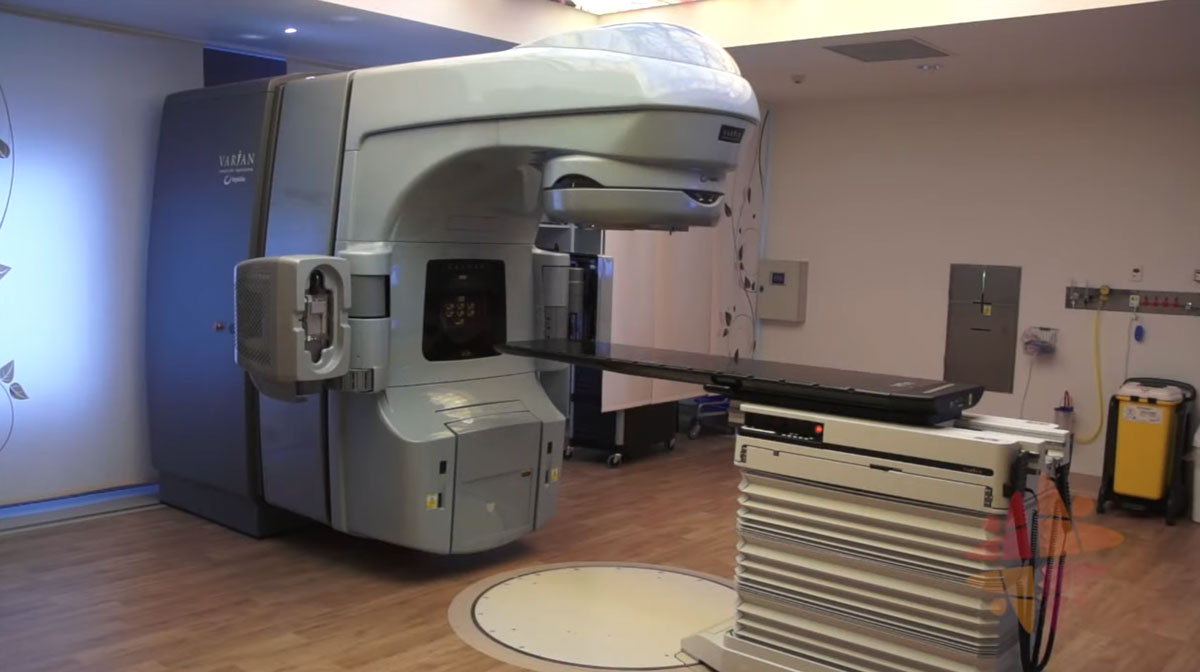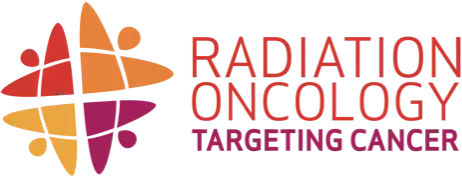About
Radiation Therapy
Radiation therapy is a part of the treatment program in around 40% of all patients cured of their cancer. It also has a very important place in helping patients with cancer that cannot be cured.
Cancer cells can’t repair the damage caused by radiation therapy. However, healthy non-cancerous cells are much better at recovering from exposure to radiation.
Consequently, cancer cells are more susceptible to radiation. Radiation damage kills the cancer cells and stops them from growing and multiplying.
Radiation therapy is a safe and effective treatment for many types of cancer. It involves the controlled application of radiation to cancers anywhere in the body. It is targeted to where ever the cancer is located in the body and can be used to improve survival, cure the patient, or relieve symptoms such as pain. Focusing the radiation on the area to be treated reduces the impact of treatment on healthy areas of the body, limiting side effects and preserving quality of life.

What types of radiation therapy are there?
Radiation therapy can be delivered using one of two techniques, either External Beam Radiation Therapy or Brachytherapy.
External beam radiation therapy often requires multiple short visits to the treatment centre over a few days to several weeks (usually Monday to Friday). A machine, called a linear accelerator, rotates around you as you lie on a treatment table. Generally a small dose of radiation (known as a fraction) is delivered each time, adding up to the total dose. This minimises damage to healthy cells, as the cells can recover between treatments, and maximises the damage caused to cancerous cells. Linear accelerators can deliver pinpoint accurate treatment to a very small cancer or treat a larger cancer close to sensitive parts of the body using techniques known as intensity modulated radiation therapy.
Brachytherapy may require a short hospital stay to implant the radiation ‘seeds’ or sources into the body. After the seeds are implanted, or brachytherapy session with removable sources is over, the patient can continue their normal daily activities. Depending on the type of brachytherapy used, patients may be required to follow some simple radiation safety guidelines for a short period to ensure that other people are not exposed to the radiation.
Treatment Process
Watch this video to find out more about what happens when you are having radiation therapy (also called radiotherapy). It demonstrates what the machine looks like, how it moves and sounds and what the staff will be doing to set-up and deliver the treatment.
Remember you do not feel anything when the treatment machine is turned on. It is like having an X-ray or scan.

What can I expect if I’m having radiation therapy?
Radiation therapy is different for each patient with cancer. Treatment is prescribed based on several factors, including:
- the type, size and location of the cancer
- whether the cancer has spread to other areas of the body
- the intention of treatment, e.g. symptom relief or cure
- whether radiation therapy is being used alone or with other forms of treatment such as chemotherapy or immunotherapy
- the patient’s general health and personal preferences.
Do I have to avoid pregnant women and young children during treatment?
Radiation therapy is different for each patient with cancer. Treatment is prescribed based on several factors, including:
- the type, size and location of the cancer
- whether the cancer has spread to other areas of the body
- the intention of treatment, e.g. symptom relief or cure
- whether radiation therapy is being used alone or with other forms of treatment such as chemotherapy or immunotherapy
- the patient’s general health and personal preferences.
How does radiation therapy help patients?
Radiation therapy is different for each patient with cancer. Treatment is prescribed based on several factors, including:
- the type, size and location of the cancer
- whether the cancer has spread to other areas of the body
- the intention of treatment, e.g. symptom relief or cure
- whether radiation therapy is being used alone or with other forms of treatment such as chemotherapy or immunotherapy
- the patient’s general health and personal preferences.
- Benefits and Effectiveness
- Treatment Process
- Radiation Oncology Team
- Potential Side Effects
- Indigenous and Maori Care
- Frequently Asked Questions
- Other Useful Resources
- External Beam Radiation Therapy (EBRT)
- Brachytherapy
- Stereotactic Radiosurgery (SRS)
- Stereotactic Ablative Radiotherapy (SABR)
- Superficial Radiation Therapy (SXRT)
- Particle Therapy
- Benefits and Effectiveness
- Treatment Process
- Radiation Oncology Team
- Potential Side Effects
- Indigenous and Maori Care
- Frequently Asked Questions
- Other Useful Resources
- External Beam Radiation Therapy (EBRT)
- Brachytherapy
- Stereotactic Radiosurgery (SRS)
- Stereotactic Ablative Radiotherapy (SABR)
- Superficial Radiation Therapy (SXRT)
- Particle Therapy
External Beam Radiation Therapy (EBRT)
Delivery of External Beam Radiation Therapy is fast and painless.
Brachytherapy
A form of radiation therapy where a sealed radioactive source is placed, inside, on or near the tumour.




